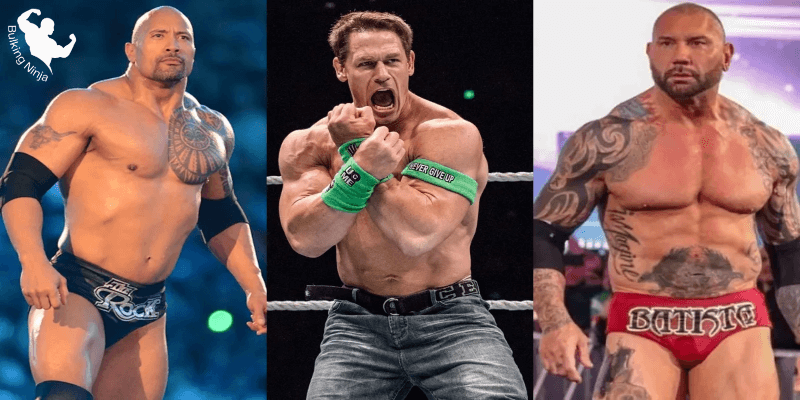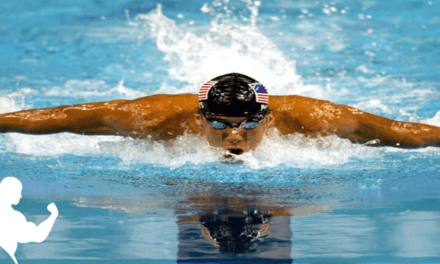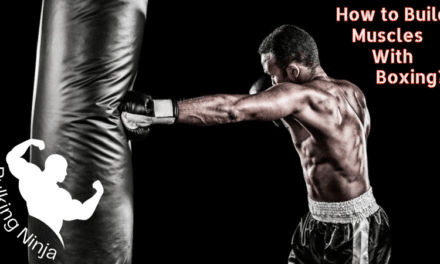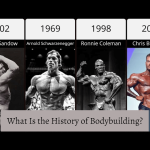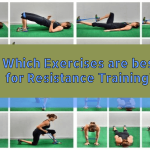Welcome to our latest blog post, where we step onto the mat and delve into the captivating realm of wrestling and its potential to sculpt a muscular physique. Often associated with intense athleticism, discipline, and mental fortitude, wrestling is a sport that demands both physical prowess and strategic thinking.
But beyond its competitive nature, can wrestling also serve as a means to build muscle? In a world saturated with various fitness routines and training modalities, the art of wrestling has remained a time-honored tradition that not only tests one’s mettle but also presents a unique opportunity to forge a strong, lean, and well-defined body.
Join us as we grapple with the science, anecdotes, and insights surrounding the intersection of wrestling and muscle development, unraveling whether this ancient practice holds the key to unlocking a new level of physical transformation.
Table of Contents
Can Wrestling Help Build Muscle?
In the realm of fitness, the ancient practice of wrestling emerges as a dynamic avenue for enhancing muscle development. Wrestling, a sport that engages the entire body, provides a rigorous full-body workout through its high-intensity activities.
The engagement of multiple muscle groups during wrestling sessions not only promotes endurance but also fosters the growth of strength, aligning with the fundamental goal of muscle building. The technique and movements intrinsic to wrestling are key elements that contribute to optimal results, ensuring that every effort invested yields efficient outcomes.
Through consistent participation in wrestling’s physically demanding activity, individuals can harness the benefits of increased strength and endurance, ultimately working towards their muscle-building aspirations.
The profound synergy between wrestling and muscle development transforms the pursuit of fitness into an enjoyable journey, where each session becomes more than just a workout – it becomes a fusion of challenge and fun.
What Are The Most Important Muscles For Wrestling?
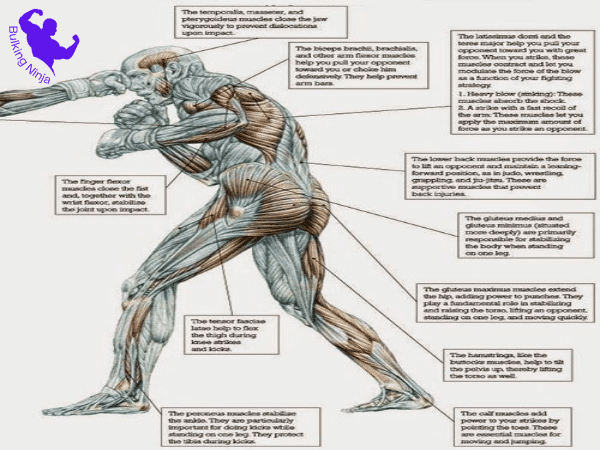
Wrestling involves a wide range of movements, from explosive bursts of power to sustained holds and grappling maneuvers. As such, the muscles needed for wrestling encompass those that contribute to both quick, powerful actions and sustained efforts. The most important muscles for wrestling can be categorized as follows:
Leg Muscles
The muscles in the legs, including quadriceps, hamstrings, and calves, are vital for generating explosive power during takedowns, lifts, and escapes. Strong leg muscles provide a solid foundation and stability, allowing wrestlers to maintain balance and generate force.
Core Muscles
The core muscles, which include the abdominal muscles and lower back muscles, play a crucial role in maintaining balance, stability, and control during various wrestling movements. A strong core enables wrestlers to execute powerful twists, turns, and maneuvers while staying in control of their opponents.
Back Muscles
The muscles of the upper and middle back, including the lats and rhomboids, are essential for controlling an opponent’s movements and maintaining a strong posture. These muscles are particularly important for maintaining a solid base while resisting opponent’s holds and maneuvers.
Shoulder Muscles
The shoulder muscles, including the deltoids and rotator cuff muscles, contribute to the range of motion and stability required for various wrestling techniques. Strong shoulders aid in executing throws, holds, and controlling an opponent’s movements.
Grip Strength Muscles
The muscles of the forearm and hand play a critical role in maintaining a firm grip on an opponent’s body or clothing. Good grip strength is essential for executing holds, controlling the opponent, and preventing escapes.
Neck Muscles
The muscles in the neck provide support and protection to the head and neck area, which is vulnerable during wrestling. Strengthening these muscles helps prevent injury and provides stability during grappling and defensive movements.
Understanding the importance of these muscle groups is crucial for wrestlers aiming to improve their performance. Effective training programs should focus on developing strength, endurance, and coordination in these areas to enhance overall wrestling abilities. By targeting and conditioning these key muscle groups, wrestlers can equip themselves with the physical attributes necessary for success in the sport. Read more about limite of build Muscles.
Does Wrestling Make You Lose Weight?
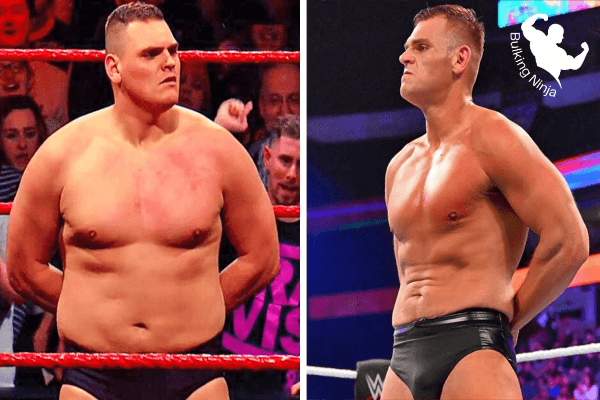
Wrestling can lose weight because, wrestling is a dynamic and physically demanding sport, goes beyond shedding pounds – it has the potential to sculpt a well-defined physique. Engaging in this rigorous physical activity expends significant energy and tests your stamina.
The intense movement and effort required in wrestling translate to a high caloric expenditure, making it not just a sport but an effective workout for those seeking to enhance their shape. The combination of technique, movement, and endurance showcased in wrestling can lead to substantial calorie burn, contributing to weight loss goals.
Studies have revealed that an hour of wrestling can result in the expenditure of an impressive number of calories, a testament to its potential as a weight management tool. While there are no absolute guarantees in fitness endeavors, the connection between wrestling, energy expenditure, and muscle-building potential is a compelling avenue worth exploring.
So, whether you’re an aspiring wrestler or someone intrigued by its benefits, the fusion of physical prowess and calorie-burning prowess in wrestling opens doors to not only weight loss but also a pathway towards a more muscular and resilient physique. Further Study about breakfst is important for grow muscles.
Does Wrestling Make You Faster?
Wrestling, a sport that has stood the test of centuries, encapsulates the essence of a multifaceted physical and mental challenge. Beyond its historical significance, wrestling offers a realm of possibilities when it comes to building muscle.
The sport’s demanding nature tests not only the timing and reflexes of participants but also pushes their bodies to the limit, nurturing attributes like speed, strength, and endurance. The opponent becomes a partner in the pursuit of enhancing techniques and exploiting movements that maximize the effectiveness of every motion.
The physicality of wrestling acts as a crucible for honing the body’s potential, with strength and endurance standing as pillars of muscle development. Techniques refined through centuries of practice unveil the significance of form, making each movement a calculated factor in the quest for mastery.
This sport, steeped in tradition, reveals that the challenge goes beyond the mere test of speed; it’s about sculpting a resilient body that can overpower obstacles and endure the rigors of the mat.
In the world of muscle building, wrestling emerges not just as a sport but as a dynamic avenue that capitalizes on physical prowess, mental acuity, and the unwavering spirit to achieve a well-rounded and muscular physique. do you want know about OATS are best for gain Muscles.
How do Muscles work in Wrestling?

The intricate interplay of muscles is a fundamental factor that dictates success on the mat. Wrestling is a sport that demands not only technical finesse but also a deep understanding of how muscles work together to execute moves, maintain balance, and exert force.
At its core, wrestling relies on a combination of muscle groups working in synergy. The muscles involved can be broadly categorized into prime movers and stabilizers. Prime movers are responsible for generating the primary force required for executing techniques, such as takedowns, escapes, and pins. Stabilizer muscles, on the other hand, play a critical role in maintaining balance, stability, and control throughout various movements and maneuvers.
The legs, for instance, serve as a powerhouse in wrestling. Muscles like quadriceps and hamstrings are engaged during explosive movements such as driving for a takedown or defending against an opponent’s attack. The core muscles, including the abdominal and lower back muscles, provide a strong foundation for maintaining balance and generating rotational force during twists and turns.
In addition, the muscles of the upper body, including the shoulders, chest, and back, contribute to controlling an opponent’s movements and executing holds. Strong grip strength, facilitated by the muscles in the forearms and hands, is crucial for maintaining a firm hold on an opponent and manipulating their positioning.
The dynamic nature of wrestling necessitates quick and coordinated muscle contractions. Muscle fibers contract and relax rapidly to execute movements with precision. For example, during a takedown, the wrestler’s leg muscles generate explosive power, while the core muscles stabilize the body and the arm muscles initiate the grip needed to control the opponent.
Understanding biomechanics is essential for wrestlers to optimize their techniques. Leveraging the right muscle groups at the right time enhances efficiency and minimizes energy wastage. Moreover, a well-rounded strength and conditioning program targets these specific muscle groups, aiming to enhance their power, endurance, and coordination.
Muscles in wrestling act as the engines that drive every move, hold, and countermove. Their coordinated efforts dictate the outcomes on the mat, from executing powerful attacks to maintaining defensive positions. By comprehending the intricate mechanics of muscles and honing their physical attributes, wrestlers can harness their body’s potential to dominate opponents and achieve success in the sport.
How to Gain Muscle for Wrestling?
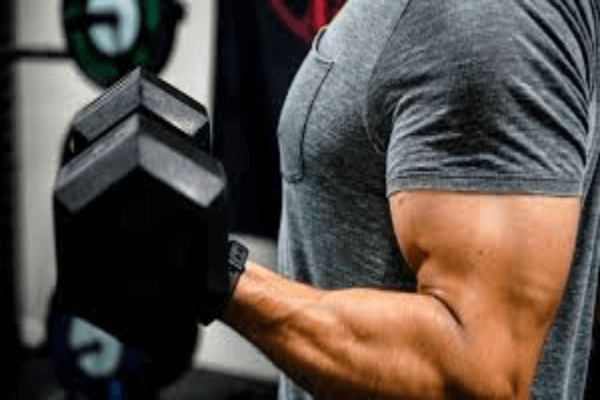
The Importance of Muscle Gain in Wrestling
Gaining muscle for wrestling is a pivotal aspect that can significantly enhance a wrestler’s performance on the mat. Muscular strength and endurance play a critical role in executing powerful takedowns, maintaining advantageous positions, and resisting opponents’ moves. This guide will delve into effective strategies tailored to the specific demands of wrestling, ensuring that the
Understanding the Wrestling-Specific Demands
Before embarking on a muscle gain journey, wrestlers must recognize the distinct physical demands of the sport. Wrestling involves explosive movements, rapid changes in direction, and sustained grappling, necessitating both functional strength and endurance. Gaining muscle should be approached with an understanding of how it complements the precise techniques and energy systems utilized in wrestling.
Tailoring Nutrition for Muscle Growth
Nutrition forms the foundation of muscle gain. Wrestlers should aim for a balanced diet rich in protein, which is essential for muscle repair and growth. Strategic meal planning, incorporating lean proteins, complex carbohydrates, and healthy fats, supports the energy demands of rigorous training sessions while fostering muscle development. Proper hydration and micronutrient intake also contribute to optimal muscle function.
Structuring an Effective Training Program
Crafting a training program that aligns with wrestling’s demands is crucial. Compound exercises, such as squats, deadlifts, and bench presses, target multiple muscle groups simultaneously, mimicking the multifaceted nature of wrestling movements. Incorporating both strength training and functional exercises enhances overall muscular development while improving core stability and balance.
Progressive Overload and Recovery
Progressive overload is a fundamental principle in muscle gain. Gradually increasing resistance during training challenges muscles to adapt and grow stronger. However, proper recovery is equally important. Wrestlers should prioritize sufficient sleep, rest days, and techniques like foam rolling or stretching to prevent overtraining and promote muscle repair.
Incorporating Wrestling-Specific Drills
To maximize muscle gain’s impact on wrestling performance, integrating wrestling-specific drills is essential. Partner drills, live wrestling sessions, and controlled practice of techniques simulate in-match scenarios, allowing muscles to adapt to the dynamic demands of actual competition. These drills enhance muscle memory, timing, and execution in the context of wrestling techniques.
Monitoring Progress and Adjustments
Regularly assessing progress is vital. Tracking muscle gain, strength improvements, and wrestling performance provides insights into the effectiveness of the training regimen. Adjustments can then be made to training intensity, volume, or nutrition based on these observations, ensuring continuous progress.
A Comprehensive Approach to Muscle Gain
Gaining muscle for wrestling requires a comprehensive approach that combines tailored nutrition, effective training, and a deep understanding of wrestling’s unique demands. By strategically aligning muscle gain efforts with the sport’s intricacies, wrestlers can enhance their physical prowess, elevate their performance, and develop the strength and endurance needed to excel in the world of wrestling.
Frequently Asked Question
Is wrestling better than gym?
Wrestling and traditional gym workouts serve different purposes. Wrestling offers dynamic physical challenges, skill development, and conditioning, while the gym focuses on general fitness and muscle building. The choice depends on your goals and preferences.
Does wrestling get you in good shape?
Yes, wrestling can get you in good shape. Wrestling is a physically demanding sport that requires strength, endurance, agility, and cardiovascular fitness. Engaging in regular wrestling practice can lead to improved overall fitness, muscle development, and enhanced cardiovascular health.
How does wrestling change your body?
Wrestling can lead to several changes in your body due to its demanding nature and unique physical requirements. Regular participation in wrestling can result in increased muscle mass, especially in the core, legs, and upper body. It enhances overall strength, agility, and cardiovascular fitness.
Additionally, wrestling helps improve body composition by reducing body fat and increasing lean muscle tissue. The sport also fosters better coordination, balance, and reflexes due to the dynamic movements and techniques involved.
Does wrestling increase testosterone?
Yes, engaging in intense physical activities like wrestling can lead to a temporary increase in testosterone levels. Testosterone is a hormone that plays a crucial role in muscle growth, energy levels, and overall athletic performance.
Intense exercise, including wrestling, has been shown to stimulate the release of testosterone, contributing to improved muscle development and performance in the short term. However, the long-term effects of wrestling on testosterone levels may vary depending on factors such as training intensity, frequency, and individual physiology.
Do wrestlers lift weights?
Yes, wrestlers often include weightlifting in their training. This helps enhance strength, muscle growth, and power, complementing their wrestling skills. Compound exercises like squats, deadlifts, and presses are common. However, weightlifting is just part of their comprehensive training, which includes skill practice and conditioning.
Can I Build Muscle with Wrestling?
Yes, you can build muscle through wrestling. Wrestling is a physically demanding sport that engages various muscle groups, promoting muscle development, strength, and endurance. The intense movements, grappling, and explosive actions in wrestling contribute to muscle growth, particularly in the legs, core, and upper body.
Additionally, wrestling-specific drills and training routines can help you achieve muscle-building goals alongside improving your overall athletic performance.
Conclusion
In conclusion, the question of whether wrestling can aid in building muscle has led us on a journey through the realms of physicality, strategy, and dedication.
While the ultimate goal of packing on muscle mass might not be wrestling’s sole purpose, the sport undeniably contributes to muscular development through its rigorous demands.
The fusion of explosive movements, controlled techniques, and enduring stamina fosters a physique that is both formidable and functional. Wrestling’s impact extends beyond the mat, teaching us that strength is not just about muscle, but also about resilience, discipline, and adaptability.
So, whether you’re drawn to the world of wrestling for its competitive allure or as a means to sculpt your body, one thing remains clear – the connection between wrestling and muscle-building potential is profound, offering a path toward a stronger, more capable self.
